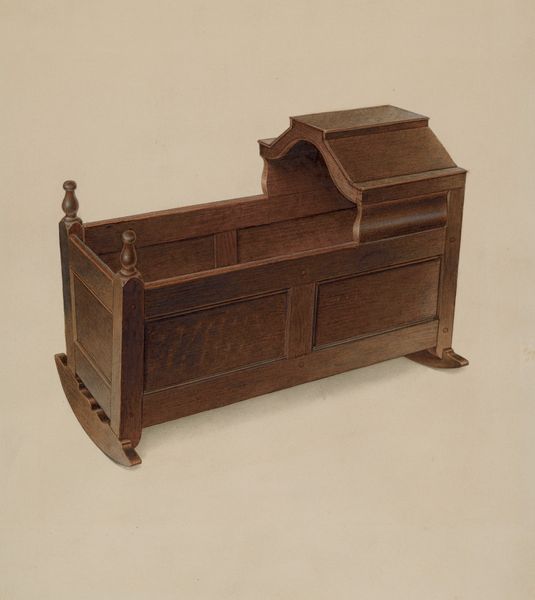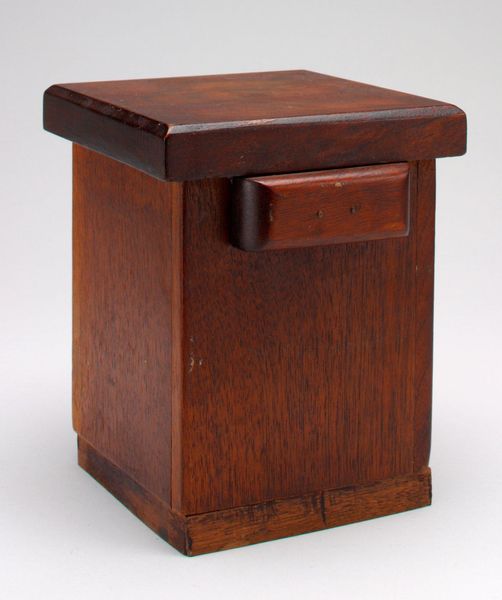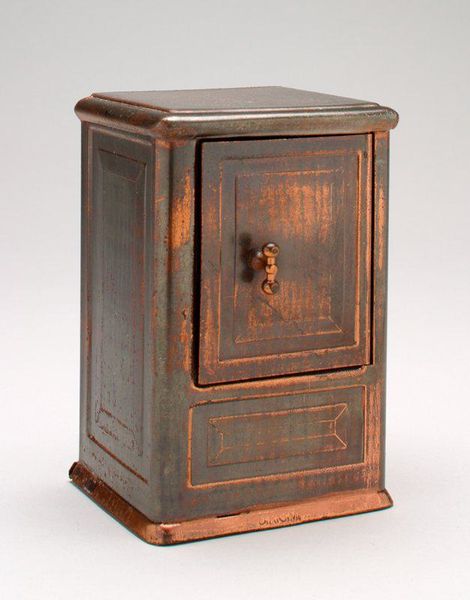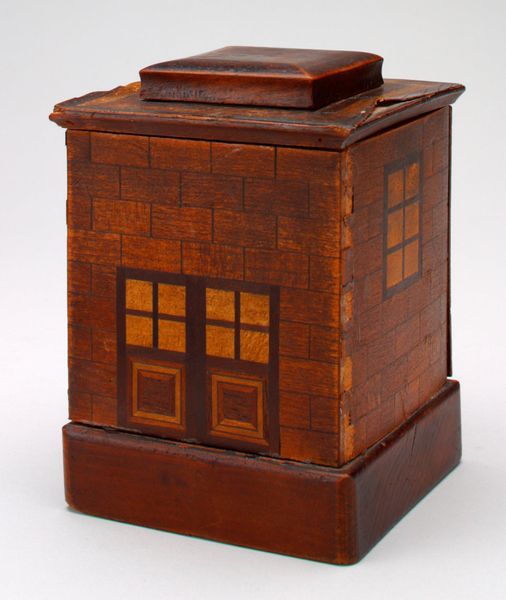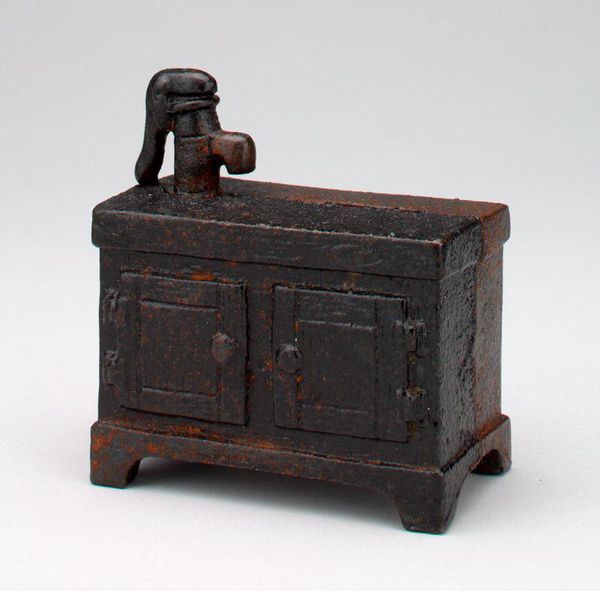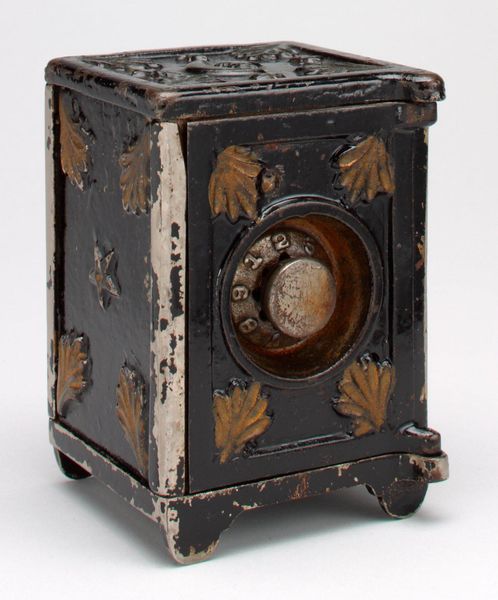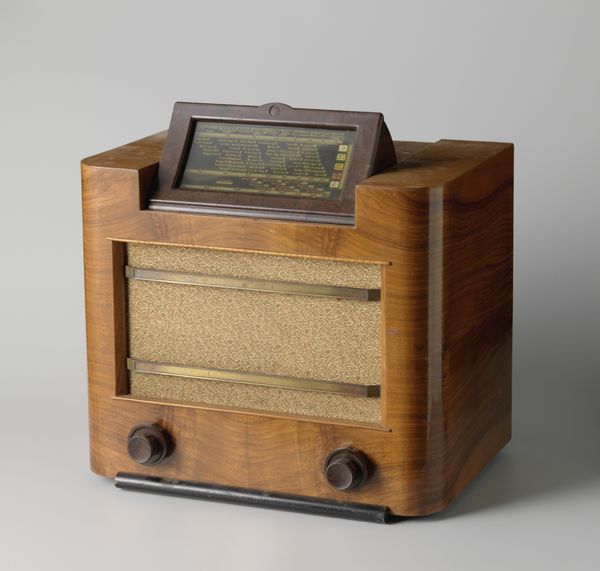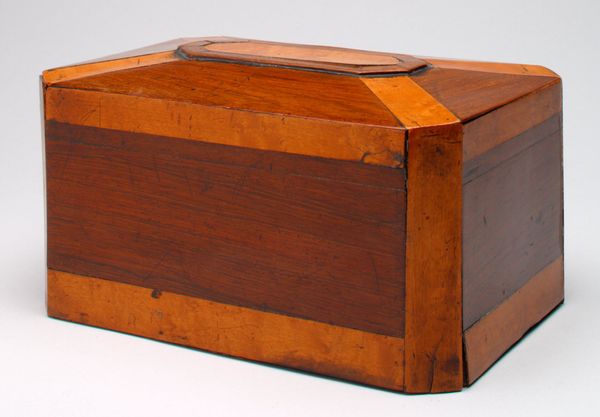
-U.S. Mail (registering)- still bank c. early 20th century
0:00
0:00
mixed-media, metal, glass, sculpture, wood
#
mixed-media
#
metal
#
sculpture
#
glass
#
sculpture
#
united-states
#
wood
#
decorative-art
Dimensions: 4 5/8 x 5 1/4 x 2 1/8 in. (11.75 x 13.34 x 5.4 cm)
Copyright: Public Domain
Editor: Here we have what's called a U.S. Mail registering still bank, dating to the early 20th century. It's a mixed media construction of wood, metal, and glass, looking somewhat like a miniature post office building. I find it strangely compelling, a solid object designed to encourage saving. How do you interpret its purpose within its historical context? Curator: Well, consider the role of institutions, especially governmental ones, in shaping personal habits. This wasn't just a bank; it was the *Postal* Savings Bank. Think about what that implies. The U.S. Postal Service, a trusted institution, directly encouraging savings, especially amongst working-class Americans, many of whom might have distrusted private banks. Editor: So it was a public institution promoting financial stability. Curator: Precisely. The design itself reinforces this. Look at the building form. This form subtly links personal savings with civic duty and national progress. Each deposit becomes a visual contribution to a shared, larger goal, recorded on those scales behind the glass. Do you notice the dual registers? Editor: Yes! They appear to be tracking the deposit amounts...one side perhaps registering lower denominations? What is striking is that it’s literally registering growth, a concrete way of measuring savings. Curator: And thereby visualizing participation in a national system. Also, remember the political landscape of the early 20th century: progressive reforms aimed at stabilizing society and empowering ordinary citizens. This bank is a material embodiment of that political moment. Editor: It's amazing to see how something as simple as a bank can reflect so many layers of cultural and political history. I hadn't considered the public aspect so directly influencing savings habits. Curator: Seeing the everyday object as a participant within grand societal movement makes this far more than mere decoration! It prompts us to think of what kind of civic structure would invite participation today.
Comments
No comments
Be the first to comment and join the conversation on the ultimate creative platform.
